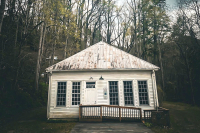Cherokee festival honors tribal music, dance and culture from around the Americas
 Known as the finest showcase of native traditions, the ninth annual Festival of Native Peoples will take place July 12-13 at Cherokee Indian Fair Grounds. The event features a variety of traditional dance, storytelling and song performances honoring the collected history, culture, tradition and wisdom of the indigenous peoples of the Americas.
Known as the finest showcase of native traditions, the ninth annual Festival of Native Peoples will take place July 12-13 at Cherokee Indian Fair Grounds. The event features a variety of traditional dance, storytelling and song performances honoring the collected history, culture, tradition and wisdom of the indigenous peoples of the Americas.
“An array of entertainment as diverse as the tribes that provide it ensures visitors to Cherokee will be impressed,” said Howard Wahnetah, event supervisor for the Eastern Band of Cherokee Indians. “The tribes are so different, and when we come together to celebrate our collective native heritage, we gain a better understanding of our own history and customs.”
Visitors to Cherokee can witness the intricate traditions of the Kwakwaka’wakw Nation, Zuni, Apache, Hawaii, Totonac, Plains Cree and Cherokee peoples through non-stop performances and art markets featuring acclaimed native artists.
“Learning the native ways of life can be fun, beautiful, interesting, exciting and a positive experience for all ages,” said Diamond Brown, a Cherokee native. “I’m teaching the native way of life on Mother Earth, keeping alive the traditions in today’s time.”
For Cherokee, the annual festival is a chance not only to rekindle their connection with other tribes, but also serve as a model for other tribes trying to duplicate Cherokee’s success in preserving their native customs.
Related Items
“It’s vital that we continue to learn from our Elders and pass down to the younger generations our living history and culture. Festival of Native Peoples helps us and visiting tribes do just that,” Wahnetah said.
Meet a few of the tribes who will be performing ...
• The Le-La-La Dancers are a traditional Kwakwaka’wakw dance company who present the First Nations culture from the British Columbia and the Pacific Northwest. The high-energy demonstrations with strong drumming bring the ancient legends of their people alive through vibrant regalia featuring carved cedar masks, button blankets and headdresses.
The family rights to perform these ceremonial dances and songs are passed down from generation to generation among many witnesses. The members of the company come from families with chiefly traditions and have inherited rights to perform the sacred dances of their ancestors.
• The Tloke Nahuake are traditional Aztec Fire Dancers, which is a family dance circle from Mexico City. Their dances will include real fire. With their heritage deeply rooted, they travel the world sharing a beautiful and ancient culture of the Mexica. Led by the Salinas family, the group is raised within its Aztec roots as members of the Pochtecatl, the “long-distance merchants,” an important part of the Mexica culture. They were a humble society all its own, below royalty, alongside the warrior class.
• Mayan Pole Flyers (Totonac) are the voladores, or flyers, return once again to thrilling audiences in vibrant traditional costumes, climb up a 90-foot pole, and leap off with only a coil of rope tied to their ankle. They “fly” gracefully around and around as the coils of rope unwind until they reach the ground. As the voladores “fly,” another performer balances at the top of the pole and plays haunting tunes on his wooden flute. The voladores rite is a traditional act of worship. The caporal plays a drum and flute and invokes an ancient spiritual offering in the form of a spectacular dance.
• Warriors of Anikituwah of the Eastern Band of Cherokee Indians are a dance group brings to life the Cherokee War Dance and Eagle Tail. The group has been designated as official cultural ambassadors by the Tribal Council of the Eastern Band of Cherokee Indians.
• The War Dance was used when men went to war, but also when meeting with other nations for diplomacy and peace, and within the Cherokee nation was also used to raise money for people in need. It conveys the strength of the Cherokee nation. The warriors also perform Cherokee social dances including the Bear Dance, Beaver Hunting Dance, and Friendship Dance.
• The White Mountain Apache Crown Dancers from Arizona exhibit the song and dance customs of two Southwestern tribes – the Apache and Navajo. The troupe leader hails from the White Mountain Apache reservation, but had a Navajo father. He melded the traditional song and dance of both tribes.
Masked dancers wearing giant, artist headpieces impersonate mountain spirits in vivid and high-energy dance. According to ancient custom, the dancers became so imbued with power that it was dangerous to touch them as they danced.
• A Zuni dance troupe from New Mexico will share the colorful dances from their pueblo, including an ancient and authentic Rain Dance and the Shalako dance performed in conjunction with the winter solstice, the start of the tribe’s New Year. The ensemble also performs the Buffalo, Eagle, Butterfly, Deer and Turkey dance. Dancers explain the significance of their movements, share their cultural experiences and interact with the audience.
• The Plains Cree of Saskatchewan will provide a visual experience of life in the 1800s with their presentation of a “Walk Back Through History.” The performance helps people to visually understand the meaning of the tipi and its adaptability with the changing of the seasons, the Hudson Bay Company and their effect on the First Nations People. Patrons will experience the value of trade through furs, beads and other items.









